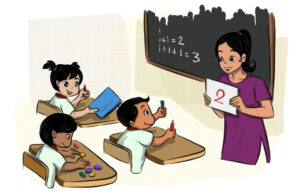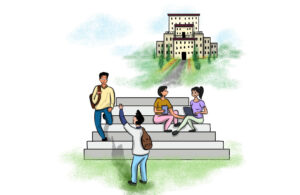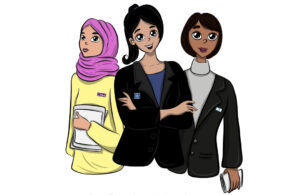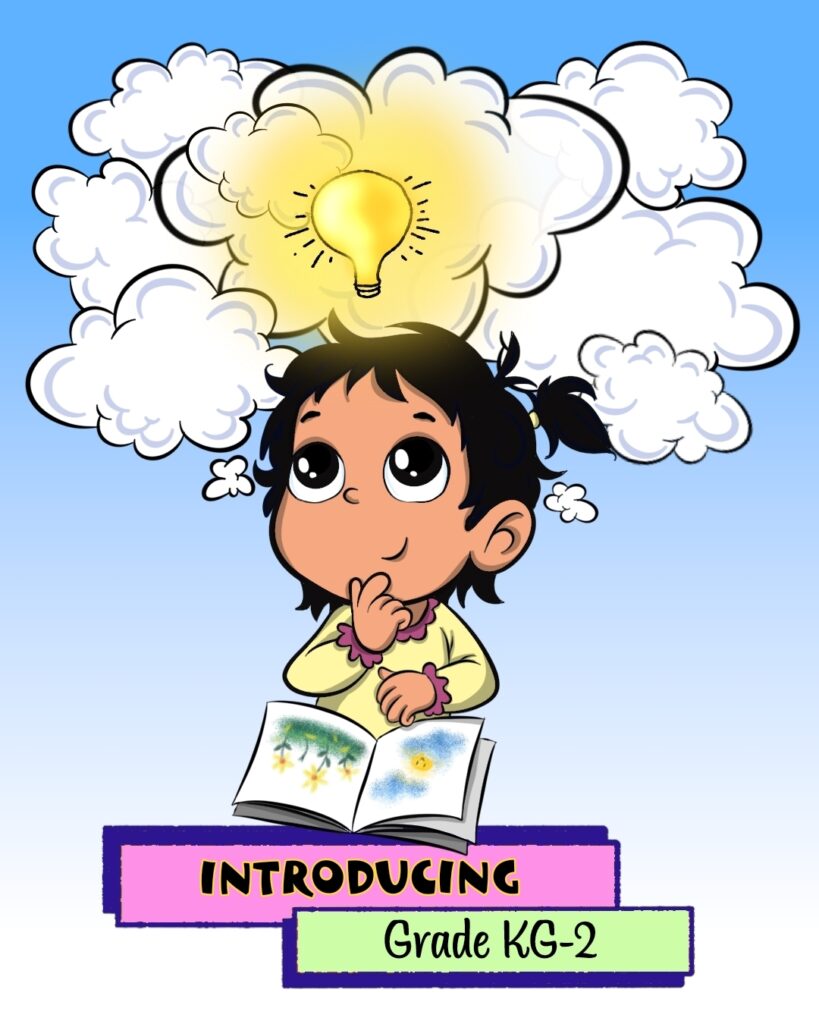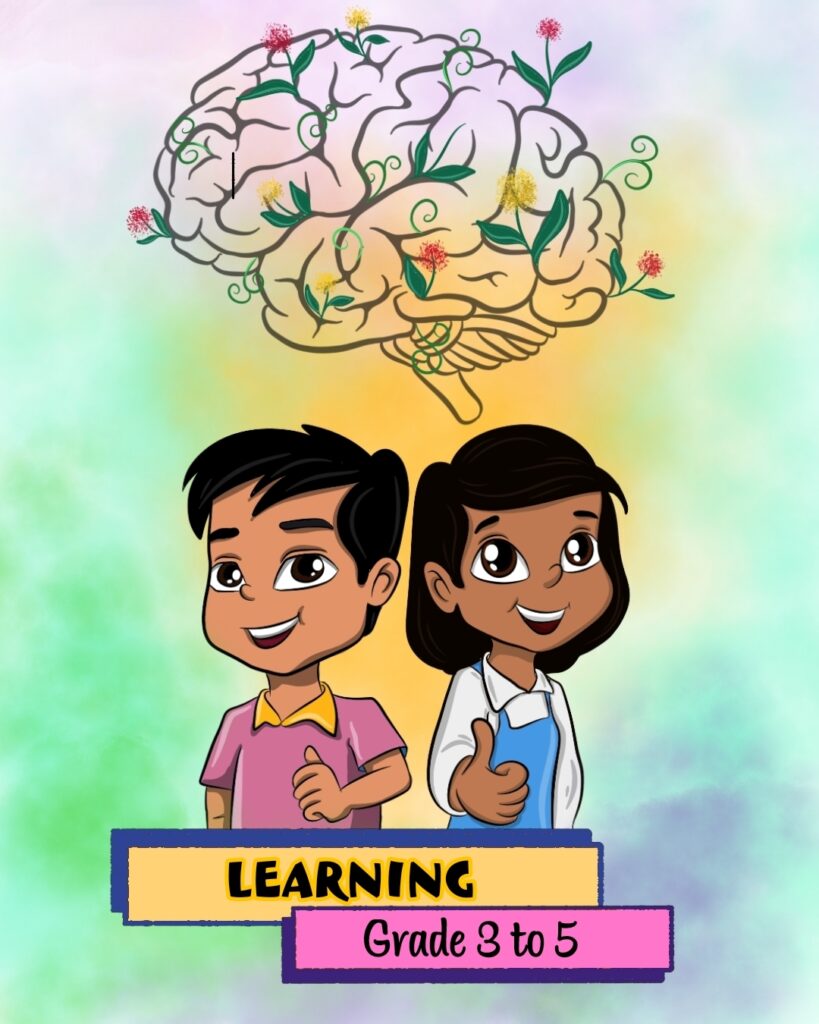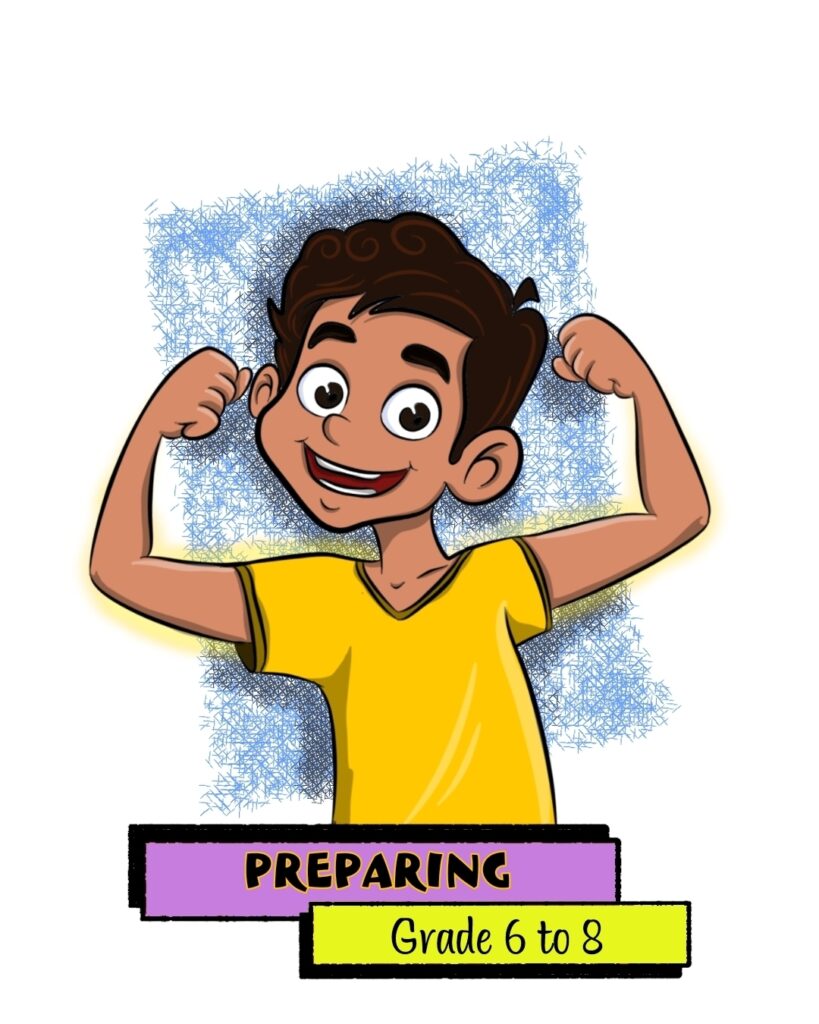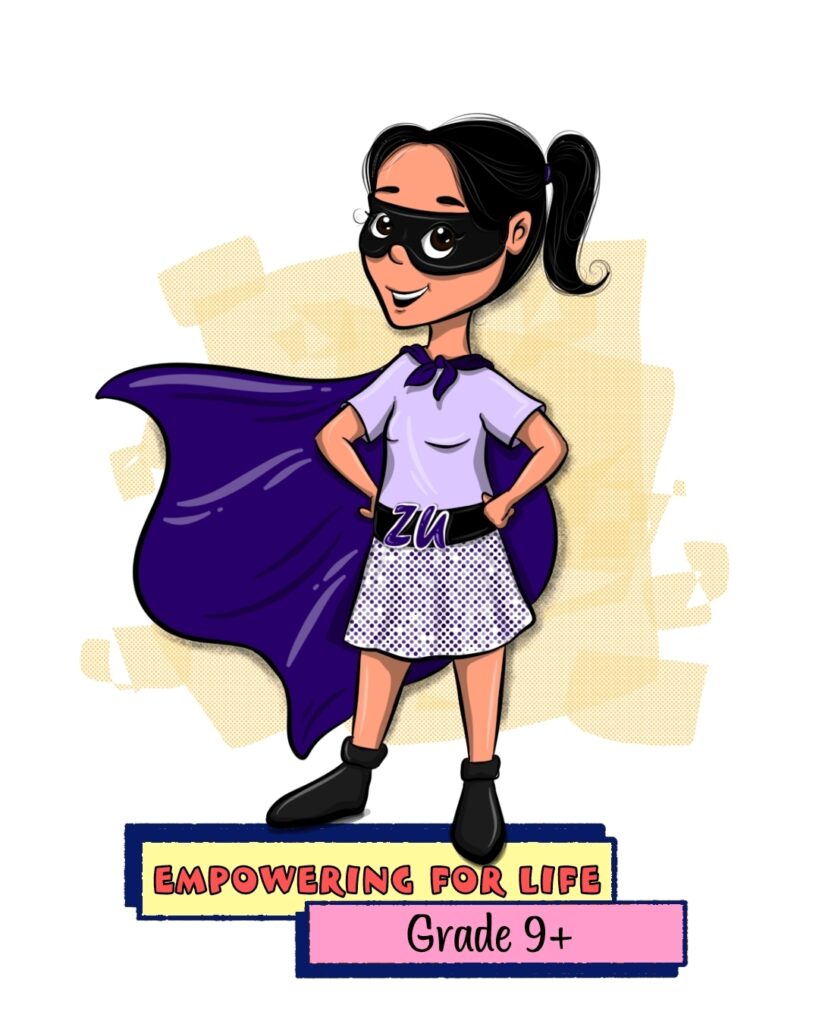Promoting an Alcohol- and Drug-Free Lifestyle
The National Family Health Survey by the Ministry of Health and Family Welfare in India reported that over 11% of Indian youth aged 15-19 years consume alcohol.
You may think that your kids are too young to be taught about Alcohol- and Drug-Free lifestyles, but teaching children about Alcohol- and Drug-Free lifestyles early in life helps them to stay away from alcohol and drugs in later years.
In our classes on promoting Alcohol- and Other Drug-Free Lifestyle, we enable students to
- Use prescription and over-the-counter medications correctly.
- To avoid any misuse and abuse of over-the-counter and prescription drugs.
- To avoid the use of alcohol and illegal drugs.
- To avoid driving while under the influence of alcohol and other drugs.
- To avoid riding in a motor vehicle with a driver who is under the influence of alcohol or other drugs.
- To quit using alcohol and other drugs if already using.
- To Support others to be alcohol- and other drug-free.
Each lesson is designed meticulously with the help of global experts, our classes are not only age-appropriate but also culturally appropriate according to the region and state you are watching the classes in. We also customize the classes to fit the requirements of each school.
We are ZatchUp and we are dedicated to empowering your child to make healthy and safe life choices.
Grade wise learning objective
We follow an 8-step learning process to empower the kids for life. To learn more about our method of teaching, click here.
KG – Grade 2
Step 1 : Understaning the Core Concept : We enable Students comprehend core concepts related to our all health and saftely courses such as concent, violence prevention
- Identify how household products are harmful if intentionally inhaled or absorbed.
- Differentiate between candy or other household substances (e.g., laundry pods) and other medications.
- Describe how to use medications correctly.
- Describe the importance of adult supervision of medication use.
- Explain the harmful effects of medications when used incorrectly.
- Describe the potential risks associated with use of over-the-counter medications.
- Differentiate between helpful medications (e.g., acetaminophen, antibiotics) and harmful drugs (e.g., alcohol, nicotine).
- Identify school rules about use of medications.
- Step 2 : Second step is to Understand Influences : We enable Students to analyze the influence of family, peers, culture, media, technology, and other factors on their health and Safety.
- Identify how family influences medication safety and adherence (i.e., taking medicine as prescribed by a healthcare provider).
- Identify how school personnel can influence medication safety and adherence.
- Identify how media and technology can influence medication safety and adherence
- Step 3 : Third step is to learn to access Information : We enable students how to access valid information, products, and services to ensure good health and their safety.
- Identify trusted adults at home who can help with taking prescription and over-the-counter medications.
- Identify trusted adults and professionals in school (e.g., school nurse) who can help with taking prescription and over-the-counter medications.
- Explain how to locate school or community health helpers who can help with information about prescription and over-the-counter medications.
- Step 4: Fourth step is to learn Interpersonal Communication : We enable students to use interpersonal communication skills to enhance health and reduce all health risks.
- Demonstrate effective refusal skills, including firmly saying “no” and moving away, when offered medications or other drugs by someone other than a trusted adult.
- Demonstrate how to effectively tell a trusted adult when feeling threatened or harmed when offered medications or other drugs by someone other than a trusted adult.
- Step 5 : Fifth step is to learn to make decision : We enable students to use decision-making skills to enhance healthly behaviour.
- Identify how family, peers, or media influence a decision to not use over-the-counter and prescription medications in unsafe ways.
- Step 8 : Eigth step is learn to Advocate : We enable Students to advocate not only for personal, but also for family, and community health.
- Make requests to others (e.g., family members) to help avoid harmful household products, medications, or drugs.
Grade 3 – Grade 5
- Step 1 : Understanding the Core Concept : We enable Students comprehend core concepts related to our all health and saftely courses such as concent, violence prevention
- Explain why household products are harmful if intentionally inhaled or absorbed.
- Define over-the-counter medication (e.g., something you can buy off the store shelf) and prescription medication.
- Explain the benefits of medications when used correctly.
- Explain how to use medications correctly.
- Describe potential risks associated with inappropriate use of over-the-counter medications.
- Describe potentials risks associated with inappropriate use of prescription medications.
- Describe the importance of not sharing medications.
- Explain the difference between medications and illicit drugs.
- Identify the risks associated with alcohol and marijuana use.
- Identify short- and long-term effects of illicit drug use, misuse of prescription or over-the-counter medications, and inappropriate use of alcohol or marijuana.
- Identify family and school rules about alcohol- and other drug-use.
- Step 2 : Second step is to Understand Influences : We enable Students to analyze the influence of family, peers, culture, media, technology, and other factors on their health and Safety.
- Identify how culture influences practices and behaviors related to alcohol use.
- Identify how peers influence practices and behaviors related to alcohol use.
- Identify how community influences practices and behaviors related to alcohol use.
- Describe how family and culture influence practices and behaviors related to alcohol use.
- Describe how school and community settings influence practices and behaviors related to alcohol use.
- Describe how media and technology influence practices and behaviors related to alcohol use.
- Describe how peers influence practices and behaviors related to alcohol use.
- Step 3 : Third step is to learn to access Information : We enable students how to access valid information, products, and services to ensure good health and their safety.
- Describe characteristics of valid information for over-the-counter and prescription medications.
- Demonstrate how to locate sources of valid information for over-the-counter and prescription medications.
- Step 4: Fourth step is to learn Interpersonal Communication : We enable students to use interpersonal communication skills to enhance health and reduce all health risks.
- Demonstrate effective verbal and nonverbal communication skills to avoid taking someone else’s prescription medication.
- Demonstrate effective verbal and nonverbal communication skills to avoid alcohol- and other drug-use.
- Demonstrate effective verbal and nonverbal communication to avoid riding in a motor vehicle with a driver who is under the influence of alcohol or other drugs.
- Explain how to be empathetic and compassionate towards a family member who is trying to quit alcohol- or other drug-use.
- Demonstrate how to effectively ask for help to avoid exposure to others who use alcohol or drugs.
- Step 5 : Fifth step is to learn to make decision : We enable students to use decision-making skills to enhance healthly behaviour.
- Identify situations that need a decision related to alcohol- and other drug-use prevention.
- Decide when help is needed and when it is not needed to make a decision to not use alcohol or other drugs.
- Explain how family, culture, peers, technology, or media influence a decision related to alcohol- and other drug-use.
- Identify options and their potential outcomes when making a decision related to alcohol- and other drug-use.
- Choose a healthy option when making a decision about alcohol and other drug prevention.
- Describe the final outcome of a decision related to alcohol- and other drug-use.
- Step 6 : Sixth step is to learn to Set Goals : We enable Students to set right goals to enhance their health and keeping themselves safe.
- Set a realistic goal to be alcohol- and drug free.
- Track progress to achieving a personal goal to be alcohol- and drug free.
- Identify resources that can help achieve a personal goal to be alcohol- and drug free.
- Step 7 : Seventh Step is learn Self-Management : We enable students to practice health-enhancing behaviors and reduce health risks.
- Describe practices and behaviors that prevent alcohol use, avoid taking others’ prescription medications, or avoid riding in a motor vehicle with a driver who is under the influence of alcohol or other drugs.
- Demonstrate healthy alcohol- and other drug-use prevention practices and behaviors.
- Commit to practicing healthy alcohol- and other drug-use prevention behaviors.
- Step 8 : Eigth step is learn to Advocate : We enable Students to advocate not only for personal, but also for family, and community health.
- Give factual information about the benefits of being alcohol- and other drug-free.
- State personal beliefs about the dangers related to alcohol- and other drug-use.
- Demonstrate how to persuade others to be alcohol- and other drug-free.
- Demonstrate how to persuade others to avoid driving while under the influence of alcohol or other drugs.
- Demonstrate how to persuade others to avoid riding in a motor vehicle with a driver who is under the influence of alcohol or other drugs.
Grade 6 – Grade 8
- Step 1 : Understaning the Core Concept : We enable Students comprehend core concepts related to our all health and saftely courses such as concent, violence prevention
- Define and differentiate between over-the-counter medications, prescription medications, and illicit drugs.
- Distinguish between proper use and abuse of over-the-counter medications.
- Distinguish between proper use and abuse of prescription medications.
- Describe how to read and interpret directions for over-the-counter and prescription medications.
- Describe why it is important to use over-the-counter and prescription medications as directed.
- Explain the dangers of sharing medications.
- Describe how to safely store medications.
- Summarize the physical and mental effects of using alcohol, marijuana, and illicit drugs.
- Determine the immediate and long-term impacts of alcohol- and other drug-use on the brain, including impacts on decision-making.
- Explain the potential effects of mixing any type of medication or drug with another.
- Determine reasons why people choose to abstain from or misuse alcohol, marijuana, prescription medications, and illicit drugs.
- Explain why using alcohol and other drugs is an unhealthy way to manage stress.
- Determine the benefits of being drug-free.
- Describe positive alternatives to using alcohol and other drugs.
- Describe the relationship between using alcohol and other drugs and other health risks, such as unintentional injuries, violence, suicide, sexual risk behaviors, and tobacco use.
- Explain the relationship between intravenous drug use and transmission of bloodborne diseases such as HIV and hepatitis.
- Explain the risks associated with using alcohol or other drugs and driving a motor vehicle.
- Explain school policies and community laws about alcohol, marijuana, prescription medications, and illicit drugs.
- Step 2 : Second step is to Understand Influences : We enable Students to analyze the influence of family, peers, culture, media, technology, and other factors on their health and Safety.
- Explain how school rules, community norms, and public health policies or laws (e.g., legal drinking age) influence alcohol- and other drug-related practices and behaviors.
- Explain how perceptions of norms influence healthy and unhealthy alcohol- and other drug-use practices and behaviors.
- Explain how social expectations influence healthy and unhealthy practices and behaviors.
- Explain how personal values and beliefs influence alcohol- and other drug-use practices and behaviors.
- Describe how alcohol- and other drug-use can influence the likelihood of engaging in other unhealthy behaviors (e.g., sexual risk behaviors).
- Analyze how family and culture influence alcohol- and other drug-use practices and behaviors.
- Analyze how school and community settings influence alcohol- and other drug-use practices and behaviors.
- Analyze how media and technology influence alcohol and other drug-use practices and behaviors.
- Analyze how peers influence alcohol- and other drug-use practices and behaviors.
- Step 3 : Third step is to learn to access Information : We enable students how to access valid information, products, and services to ensure good health and their safety.
- Analyze the validity of information for over-the-counter and prescription medications (e.g., differentiate between scientifically or medically accurate content and advertising, including sponsored content).
- Analyze the validity of information for alcohol- and other drug-use prevention.
- Describe situations that call for professional alcohol- and other drug-use treatment services.
- Determine the availability of valid alcohol- and other drug-use cessation products.
- Access valid alcohol- and other drug-use prevention information from home, school, or community.
- Step 4: Fourth step is to learn Interpersonal Communication : We enable students to use interpersonal communication skills to enhance health and reduce all health risks.
- Demonstrate the use of effective verbal and nonverbal communication to avoid taking someone else’s prescription medication.
- Demonstrate the use of effective verbal and nonverbal communication to avoid alcohol- and other drug-use.
- Demonstrate the use of effective verbal and nonverbal communication to avoid riding in a motor vehicle with a driver who is under the influence of alcohol or other drugs.
- Demonstrate effective peer resistance skills to avoid or reduce alcohol- and other drug-use.
- Demonstrate effective negotiation skills to avoid or reduce exposure to alcohol- and other drug-use.
- Demonstrate how to effectively ask for assistance to quit using alcohol or other drugs.
- Demonstrate how to effectively communicate empathy and support to a family member or friend who is trying to quit alcohol or other drug use.
- Step 5 : Fifth step is to learn to make decision : We enable students to use decision-making skills to enhance healthly behaviour.
- Identify circumstances that help or hinder making a decision to be alcohol- and other drug-free.
- Determine when situations related to alcohol- and other drug-use require a decision (e.g., when a peer offers an alcoholic drink, deciding about getting into a motor vehicle with a driver who has been using alcohol and other drugs).
- Distinguish when decisions related to alcohol- and other drug-use should be made individually or with the help of others.
- Explain how family, culture, technology, media, peers, and personal beliefs affect a decision related to alcohol- and other drug-use.
- Distinguish between healthy and unhealthy alternatives of a decision related to alcohol- and other drug-use.
- Predict the potential outcomes of healthy and unhealthy alternatives to a decision related to alcohol- and other drug-use.
- Choose a healthy alternative when making a decision related to alcohol- and other drug-use.
- Analyze the effectiveness of a final outcome of a decision related to alcohol- and other drug-use.
- Step 6 : Sixth step is to learn to Set Goals : We enable Students to set right goals to enhance their health and keeping themselves safe.
- Assess personal practices related to alcohol- and other drug-use.
- Set a realistic personal goal to be alcohol- and other drug-free.
- Assess the barriers to achieving a personal goal to be alcohol- and other drug-free.
- Apply strategies to overcome barriers to achieving a personal goal to be alcohol- and other drug-free.
- Use strategies and skills to achieve a personal goal to be alcohol- and other drug-free.
- Set a realistic personal goal to be alcohol- and drug-free or to avoid riding in a motor vehicle with a driver who is under the influence of alcohol or other drugs.
- Assess the barriers to achieving a personal goal to be alcohol- and drug-free or to avoid riding in a motor vehicle with a driver who is under the influence of alcohol or other drugs.
- Apply strategies to overcome barriers to achieving a personal goal to be alcohol- and drug-free or to avoid riding in a motor vehicle with a driver who is under the influence of alcohol or other drugs.
- Use strategies and skills to achieve a personal goal to be alcohol- and drug-free or to avoid riding in a motor vehicle with a driver who is under the influence of alcohol or other drugs.
- Step 7 : Seventh Step is learn Self-Management : We enable students to practice health-enhancing behaviors and reduce health risks.
- Explain the importance of being responsible for being alcohol- and other drug-free.
- Analyze personal practices and behaviors that reduce or prevent alcohol- and other drug-use.
- Demonstrate alcohol- and other drug-use prevention practices and behaviors to improve the health of oneself and others.
- Commit to practicing healthy alcohol- and other drug-use prevention behaviors.
- Commit to avoiding riding in a motor vehicle with a driver who is under the influence of alcohol or other drugs.
- Step 8 : Eigth step is learn to Advocate : We enable Students to advocate not only for personal, but also for family, and community health.
- State a health-enhancing position about being alcohol- and other drug-free, supported with accurate information, to improve the health of others.
- Persuade others to be alcohol- and other drug-free.
- Persuade others to avoid driving while under the influence of alcohol or other drugs.
- Persuade others to avoid riding in a motor vehicle with a driver who is under the influence of alcohol or other drugs.
- Collaborate with others to advocate for individuals, families, and schools to be alcohol- and other drug-free.
- Demonstrate how to adapt alcohol- or other drug-free messages for different audiences.
Grade 9 – Grade 12
- Step 1 : Understaning the Core Concept : We enable Students comprehend core concepts related to our all health and saftely courses such as concent, violence prevention
- Differentiate between over-the-counter medications, prescription medications, and illicit drugs.
- Differentiate between proper use and abuse of over-the-counter medications.
- Differentiate between proper use and abuse of prescription medications.
- Describe how to read and interpret prescription and over-the-counter medication labels.
- Describe how to store medications safely.
- Explain the potential consequences of mixing any type of drug with another medication or drug, or with alcohol (sometimes called poly-drug use).
- Describe the harmful effects of binge drinking.
- Summarize the harmful short- and long-term physical, psychological, and social effects of using alcohol and illicit drugs, and misusing prescription medications.
- Describe the effects of using alcohol and other drugs on school performance, absenteeism, job-related performance, and interpersonal relationships.
- Explain the effects of alcohol- and other drug-use during pregnancy.
- Evaluate situations that could lead to the use of alcohol and other drugs.
- Summarize why alcohol or other drug use is an unhealthy way to manage weight or stress.
- Analyze why individuals choose to use or not to use alcohol and other drugs.
- Analyze short- and long-term benefits of remaining alcohol- and drug-free.
- Determine socially appropriate ways to avoid or prevent use of alcohol and other drugs.
- Analyze the relationship between alcohol- and other drug-use and the major causes of death and disease in the United States.
- Analyze the relationship between using alcohol and other drugs and other health risks, such as unintentional injuries, violence, suicide, sexual risk behaviors, and tobacco use.
- Summarize the relationship between intravenous drug use and transmission of bloodborne diseases such as HIV and hepatitis.
- Summarize long-term health benefits of abstaining from or discontinuing alcohol use.
- Analyze the dangers of driving while under the influence of alcohol or other drugs.
- Summarize the importance of not riding with a driver who has been using alcohol or other drugs.
- Analyze how addiction to alcohol and other drugs can be treated.
- Analyze how alcohol and drug cessation programs can be successful.
- Summarize family rules, school rules, and community laws about alcohol- and other drug-use.
- Step 2 : Second step is to Understand Influences : We enable Students to analyze the influence of family, peers, culture, media, technology, and other factors on their health and Safety.
- Explain how public health policies influence alcohol and other drug-use practices and behaviors.
- Analyze how culture supports and challenges alcohol and other drug-use beliefs, practices, and behaviors.
- Analyze how peers and perceptions of norms influence healthy and unhealthy alcohol- and other drug-related behaviors.
- Analyze how personal attitudes, values, and beliefs influence health and unhealthy alcohol and other drug-use behaviors.
- Analyze how alcohol- and other drug-use can influence the likelihood of engaging in other unhealthy behaviors (e.g., sexual risk behaviors).
- Analyze how laws, rules, and regulations influence behaviors related to alcohol- and other drug use.
- Analyze how school and community settings influence practices and behaviors related to alcohol- and other drug-use.
- Analyze how media and technology influence personal, family, and community behaviors related to alcohol- and other drug-use.
- Differentiate relevant influences, including family, culture, peers, school, community, media, technology, and public health policies on practices and behaviors related to alcohol- and other drug-use.
- Analyze the factors that influence opportunities to obtain safe, accessible, equitable, and affordable products and services that support prevention or cessation of alcohol and other drugs for oneself and others.
- Step 3 : Third step is to learn to access Information : We enable students how to access valid information, products, and services to ensure good health and their safety.
- Evaluate the validity of information for over-the-counter and prescription medications (e.g., differentiate between scientifically or medically accurate content and advertising, including sponsored content).
- Evaluate the validity of information for alcohol- and other drug-use prevention.
- Evaluate the validity of alcohol and other drug-use prevention and cessation products.
- Evaluate the validity of alcohol and other drug-use treatment services.
- Determine the accessibility of valid alcohol and other drug-use prevention and cessation products.
- Determine the accessibility of valid alcohol- and other drug-use treatment services.
- Determine when professional alcohol- and other drug-use cessation services may be required.
- Use resources that provide valid alcohol- and other drug-use prevention information.
- Step 4: Fourth step is to learn Interpersonal Communication : We enable students to use interpersonal communication skills to enhance health and reduce all health risks.
- Demonstrate effective communication skills to avoid taking someone else’s prescription medication.
- Demonstrate effective communication skills to be alcohol- and other drug-free.
- Demonstrate effective communication skills to avoid riding in a motor vehicle with a driver who is under the influence of alcohol or other drugs.
- Demonstrate effective peer resistance, negotiation, and collaboration skills to avoid alcohol- and other drug-use.
- Demonstrate how to effectively ask for assistance to quit using alcohol or other drugs.
- Demonstrate how to offer assistance to help others quit alcohol- or other drug-use.
- Step 5 : Fifth step is to learn to make decision : We enable students to use decision-making skills to enhance healthly behaviour.
- Examine barriers to making a decision to be alcohol- and other drug-free.
- Determine the value of applying thoughtful decision making related to alcohol- and other drug-use.
- Justify when individual or collaborative decision related to alcohol- and other drug-use is appropriate.
- Analyze how family, culture, technology, media, peers, and personal beliefs affect a decision related to alcohol- and other drug-use.
- Generate alternatives when making a decision related to alcohol- and other drug-use.
- Predict the potential short- and long-term consequences of alternatives when making a decision related to alcohol- and other drug-use.
- Choose a healthy alternative when making a decision related to alcohol- and other drug-use.
- Choose a healthy alternative when making a decision related to riding in a motor vehicle with a driver who has been using alcohol or other drugs.
- Evaluate the effectiveness of decisions related to alcohol- and other drug-use.
- Step 6 : Sixth step is to learn to Set Goals : We enable Students to set right goals to enhance their health and keeping themselves safe.
- Assess personal practices and behaviors related to alcohol- and other drug-use.
- Set a realistic goal to remain alcohol- and other drug-free, to quit using alcohol or other drugs, or to not ride in or on a motor vehicle with a driver who is under the influence of alcohol or other drugs.
- Assess the barriers to achieving a personal goal related to alcohol- and other drug-use prevention.
- Develop a plan to attain a personal goal related to alcohol- and other drug-use prevention.
- Implement strategies, including self-monitoring, to achieve a personal goal related to alcohol- and other drug-use prevention.
- Use strategies to overcome barriers to achieving a personal goal related to alcohol- and other drug-use prevention.
- Formulate a long-term plan to achieve a personal goal related to alcohol- and other drug-use prevention.
- Step 7 : Seventh Step is learn Self-Management : We enable students to practice health-enhancing behaviors and reduce health risks.
- Analyze the role of individual responsibility for being alcohol- and other drug-free.
- Evaluate personal practices and behaviors that reduce or prevent alcohol- and other drug-use.
- Demonstrate alcohol-use prevention behaviors and practices to improve the health of oneself and others.
- Commit to being alcohol and drug-free.
- Commit to avoiding riding in a motor vehicle with a driver who is under the influence of alcohol or other drugs.
- Commit to not driving a motor vehicle while under the influence of alcohol or other drugs.
- Step 8 : Eigth step is learn to Advocate : We enable Students to advocate not only for personal, but also for family, and community health.
- Use peer and societal norms, based on accurate health information, to formulate a message that promotes being alcohol- and other drug-free.
- Persuade and support others to be alcohol- and other drug-free.
- Persuade and support others to avoid driving while under the influence of alcohol or other drugs.
- Persuade and support others to avoid riding in a motor vehicle with a driver who is under the influence of alcohol or other drugs.
- Collaborate with others to advocate for personal, family, and community alcohol- and other drug-use prevention.
- Encourage school and community environments to promote being alcohol- and other drug-free.
- Adapt alcohol- or other drug-free health messages and communication techniques for a specific target audience.
- Persuade school and community leaders about the importance of ensuring safe, accessible, equitable, and affordable alcohol and other drug-use prevention and treatment services.

